Serendip is an independent site partnering with faculty at multiple colleges and universities around the world. Happy exploring!
Towards Day 8: "The Art of Letting Go"

Discussion Notes by rachelr
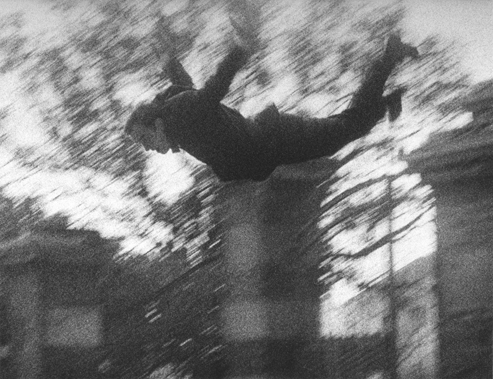
I. before we fall too far/get too lost:
a little mapmaking (aka coursekeeping)
* naming one another and signing-in
* today's notetakers: Owl, rachelr
**innovation initiated by maht91: it would be handy if the second notetaker posted her notes as a comment to the first one, so we can easily compare our own alternative productions of "non-fictional prose'
**also: your write-ups don't need to be exhaustive: I have exhaustive scripts already up in "course notes," so you don't have to repeat anything that's there; focus instead on what is NOT already up: student contributions to the conversation--without names!--and your own reflections on what happened: what was the mood of the class? where did we get to that we hadn't been before? this is your posting for the week, so what did you THINK ABOUT the record you've written?
* featuring more webpapers!: Emily T on storytelling in the law: truth or persuasion; SandraG on medical histories: constructed or compiled?; Emily D on animals' truth telling
* how about a visit from President McAuliffe?
* for next Tuesday: read around in The Ecology of Wisdom
[available as an electronic resource].
first, pay particular attention to the bullet points:
Introduction, pp. 17-18: list of favorites among his "distilled norms, formulas, principles, slogans, mottoes, and outlines"
p. 28: 8-point platform principles
"Self-Realization," p. 81: 6-point "condensation"
"The Basics of the Deep Ecology Movement," p. 111: 8-point proposal
"Lifestyle Trends," pp. 140-141: 25-point list of adaptations
then choose several essays to read
I've been drawn esp. to
"Avalanches as Social Constructions," p. 68 f,
"The World of Concrete Contents," p. 70f,
"The Place of Joy in a World of Fact", p. 23f,
"Gestalt Thinking and Buddhism," p. 195f, and
"Gandhian Nonviolent Verbal Communication," p. 219f...
but we'll have a more interesting conversation if you
read where you are led, then come in ready to say
1) what you learned/what was added to you by this reading
2) what questions you have/where you found yourself resisting.
Clearly, continuing the trajectory toward increasing shared subjectivity: Naess offers a "program," a broad philosophical system for deep ecology.
II. But first! Let's go on getting lost (before the cross country runners leave....) Following smacholdt again, let's set the scene for our discussion with a little country music:

"Long Black Veil"
The songs that worked their way into my blood ... always spanned and layered time. The music was haunted, was about distant memory, was .. at the very least aimed at a beloved far beyond earshot .... The quintessential song in this vein and the one I love best is "Long Black Veil," which the protagonist sings from beyond the grave, ten years after he was hanged for a crime he did not commit ... that sense of looking at ghosts and wraiths in the rearview mirror of irrecoverable time, irrecoverable loss and error (pp. 114-116).
These are Solnit's (complimentary) keynotes:
It is the nature of things to be lost (p. 185).
[but] In dreams, nothing is lost (p. 182).
Imagine yourself streaming through time shedding gloves, umbrellas, wrenches, books, friends, homes, names. This is what the view looks like if you take a rear-facing seat on the train. Looking forward you constantly acquire moments of arrival, moments of realization, moments of discovery ... you are greeted by what you have never seen before ... the art is ... one of ... letting go. And when everything else is gone, you can be rich in loss (p. 22-23).
Cf. Elizabeth Bishop's poem, "One Art," which
begins, "The art of losing isn't hard to master....,"
and ends, "Though it looks (write it!) like disaster."
(she's trying to talk herself into this position...)
Cf. also TyL's end-of-class query about (the impossibility
of) turning "getting lost" into program... an oxymoron?
& ckosarek: I'm wondering if her literary undertaking
is effective - can one really map the unknown?
the larger/st point: that any experience can be described a number of different ways (smacholdt: I liked her point about the variability of maps; maht91: I really liked the idea that no representation is complete, and that any place can be mapped infinite ways.)
Loss can lead to discovery (EVD: I think her book is ... telling us ... HOW to be lost, when we inevitably are, and how to grow from it.)
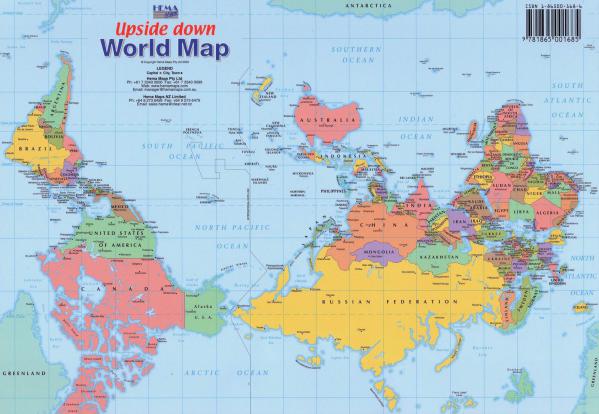
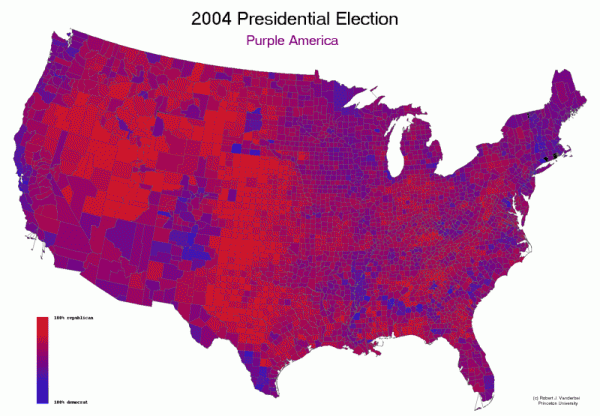
III. I've (despite Amanda's critique) organized today's script around various "arts of loss," and the fundamental question of what it means to represent loss: whether, once represented, it is recuperated. Does representing losing change it into finding?
cf. SandraG: The description of artists is a little depressing .... It kind of seems like she is dismissing the work artists do because nothing is ever solved or "found" in their work while with scientists eventually transform the unknown to the known.
Let's begin thinking about ruins as sites of loss:
what do they teach us? What do they "figure"?
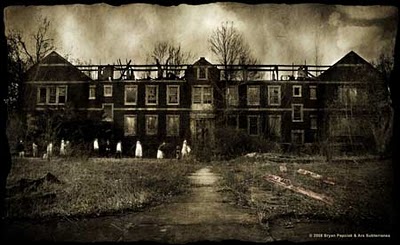
... a ruin is a human construction abandoned to nature, and one of the allures of ruins ... is that of wilderness: a place full of the promise of the unknown with all its epiphanies and dangers (Solnit, p. 89).

A city is built to resemble a conscious mind, a network that can calculate, administrate, manufacture. Ruins become the unconscious of a city, its memory, unknown, darkness, lost lands .... With ruins a city springs free of its plans into something ... intricate ... that can be explored but perhaps not mapped (p. 89).
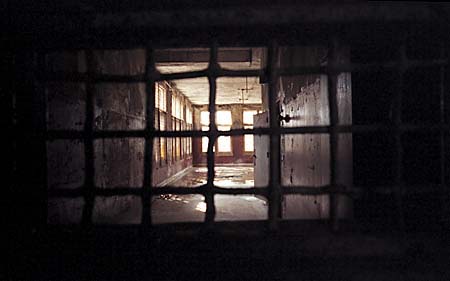
The mind too can be imagined as a landscape, but only the minds of sages might resemble the short-grass prairie .... The rest of us have caverns, glaciers, torrential rivers, heavy fogs, chasms that open up underfoot, even marauding wildlife bearing family names. It's a landscape in which getting lost is easy and some regions are terrifying to visit (p. 53)
IV. Let's play w/ this idea a bit: draw a map of your mind...
what's it "look like" on the inside?
 |
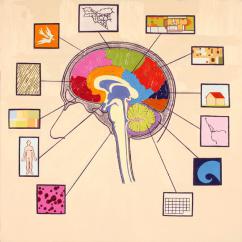 |

Go round and say...
so: what's the relationship between
what's inside and what's outside?
.... imagine the space inside our heads expanding but the places outside shrinking (p. 187).
Name a place that shaped you...
...topography can be a drug (p. 107).
...or a place that figures who you are:
Perhaps ... I could describe her as three places: the suburbs that made us ... the urban night she made into a home ... and the pastoral world of a lyrical European culture (p. 98).
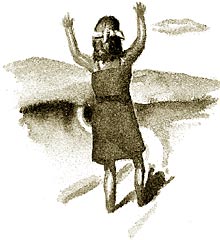
V. Where-and-how do you think Solnit would weigh in,
in our discussion so far about the "fictionality" of fact,
the constructedness of non-fiction?
I think sometimes that I became a historian because ... I was interested in telling the truth in a family in which truth was an elusive entity. It could be best served ... by disclosing your own desires and agendas, for truth lies ... in hopes and needs. The histories I've written have often been hidden, lost, neglected, too broad or too amorphous to show up in others' radar screens ... paths and waterways that meander through many fields and belong to no one (pp. 58-59).
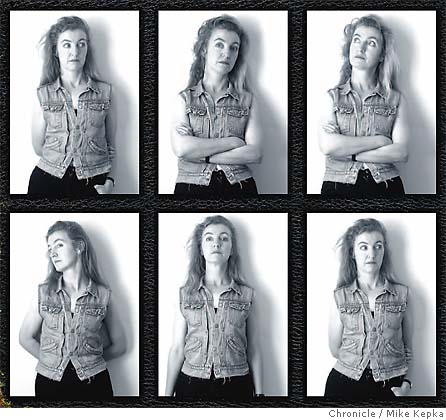
Nonfiction seems to me photographic; it poses the same challenge of finding form and pattern in the stuff already out there and the same ethical obligations to the subject .... In essays, ideas are the protagonists, and they often develop much like characters down to the surprise denouement (p. 144).
Yet Solnit shows that photographs are eminently manipulatable. She spends considerable time, for example, on Yves Klein's "The Leap into the Void" (1960), a montage splicing together Klein above and the street below (without the tarp and colleagues who caught him):
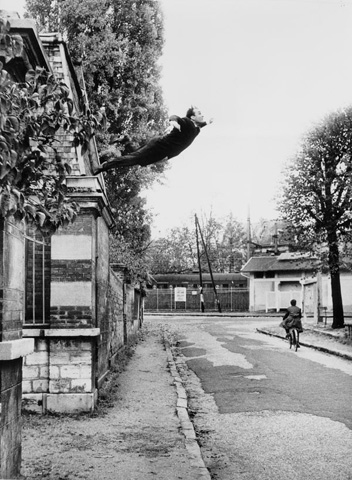
VI. Solnit says that Klein sought to transcend or annihilate representation itself, which is always about what is absent, for an art of immediacy and of presences .... His principal paintings were without subject ... he was concerned with the dissolution of the rational mind, of expectation ... with erasing the map of reason and entering the void of pure consciousness ....
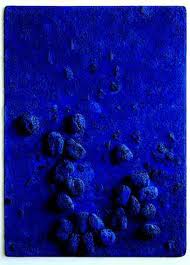
"Klein used color ... as though it could be an explicit and overtly political tool for ending wars." He had always been against making distinctions and divisions, fulminating even against the line in painting and celebrating the unifying force of color instead (p. 169).

VII. Solnit differs from Bechdel in "drawing" explicitly general claims out of her own lived experience (referencing an increasingly large shared subjectivity): most European-Americans remained lost over the centuries ... in the profound sense of apprehending where they truly were, of caring what the history of the place was and its nature (p. 66).
There are known knowns...there are known unknowns .... there are also unknown unknowns.... And unknown knowns, things we don't know that we know [or] pretend not to know about (168).
Discussion Notes by rachelr


